 Engo 2 smart glasses Review
Engo 2 smart glasses Review
Here’s a summary review of the new Engo 2 smart glasses followed by in-depth details further below.
Over the years I’ve been somewhat cynical about the usefulness of heads-up displays in endurance sports, Engo 2 changed my opinion.
Price when reviewed: €329.00 Engo Eye Wear

Verdict: ⭐⭐⭐⭐ - Good! and surprisinlgy useful. Let down only by the price and it needs a photochromic lens option.
Engo 2 Review - Summary
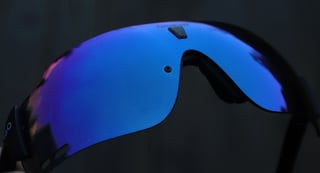 Engo 2 is a smart, configurable heads-up display for your Garmin Edge, Garmin Watch, Suunto or Apple Watch. No need to carry a smartphone.
Engo 2 is a smart, configurable heads-up display for your Garmin Edge, Garmin Watch, Suunto or Apple Watch. No need to carry a smartphone.
It connects reliably to your main sports device, shows clearly your key performance metrics and will delight the kind of runner or cyclist who just has to have the latest tech.
Pros
- Great for pacing efforts
- Decent battery life
- Mostly easy to operate
Cons
- Price will be OK for early tech adopters, perhaps too much for the ‘mass’ market
- Needs a photochromic lens (coming)
- Navigational features need to work wider than the Suunto platform
- No support for lap data
- A couple of negative experiences were reported in the comments section below

Engo 2 Aesthetics
Engo 2 looks like regular sunglasses from the front or side.
If you look at the inner side of Engo 2 then it’s pretty obvious that there is a chunk of tech there.
However, anyone else probably wouldn’t realise that you are wearing smart glasses. You can’t say that of the FORM Swim goggles which look bulky.
Part of the improvement from Engo 1 to gen 2 was the aesthetics. I’d say these are pretty normal-looking, trendy-enough sports glasses. I’d wear them.

How Engo 2 Works
Engo 2 only links directly to one thing at a time – either the app, a sports watch or your bike computer.
Engo 2 does NOT need a smartphone when you exercise. You only need the ActiveLook smartphone app to set up the glasses. But, if you like, you can use the same smartphone app to exercise, rather than a watch or bike computer.
You will also need to download and install the free ACTIVELOOK app on your sports device from Google Play, Apple App Store, Garmin CIQ Store, or the SuuntoPlus Store.
In normal use during a workout, Engo 2 is simply a display for some of the data already on your watch or bike computer. It uses Bluetooth to link to the Activelook device app and it’s that app which gathers the native data from sensors already paired to the watch or bike computer.
So the number of available Bluetooth channels should not be a problem as you should already have paired your sensor to your watch/bike computer.

Examples
Your Garmin Edge bike computer will send GPS information (speed, distance) to the Engo 2. But if you use a bike speed/cadence sensor Garmin Edge gives that information priority and sends it rather than GPS.
Similarly, heart rate from a chest strap will normally have priority but if your battery ran out during the workout, then the optical HR on your watch should instead start to be broadcast to Engo.
Stryd is an unusual exception, treated differently by different watchmakers. Stryd is a standard power meter, a standard footpod and can also be used in a proprietary way by 3rd party apps.
Garmin
Note: Developer data from other developers within Garmin CIQ cannot be accessed.
- Any bike power meter linked to your Garmin by BLE or ANT+ should be visible in Engo 2.
- You should see Garmin Running Power in Engo 2.
- If you have correctly paired a footpod, like Stryd, on a Garmin watch then the displayed pace and distance originate from Stryd, not GPS.
- When using the Stryd app on a Garmin watch, you will not see Stryd running power in Engo 2.
- When using the Stryd Zones data field on a Garmin watch you will not see Stryd running power in Engo 2.
- However, if you have paired Stryd as a power meter on a Garmin watch (which is usually incorrect) then ActiveLook should display power
Apple Watch
Basically, Engo 2 will display the same kinds of data as in the Apple Workout app
- Pace, distance, Apple running power and running dynamics come from the Apple Watch only.
- Bike power is not supported

Suunto
- The ActiveLook app for SuuntoPlus is not configurable
- Thus pace, distance and power will come from whatever the Suunto watch is set up to use.
- I assumed that Engo 2 would use the screen configuration from iOS/Android app but it seems to not be configurable.
I’ll update this when I get clarification from ActiveLook. there were too many combinations for me to test what should be documented.
Confusing, I know.
Finally, Engo also has a central sensor on the front of the glasses. Lightly touching or waving at the sensor causes the display to move to the next page. A page can be configured to place the glasses on standby and save battery.
Supported Watches & Bike Computers
There is good compatibility with a wide range of popular connected sports devices.
- Garmin Edge – Explore, 530, 830, 1030, 1030+, 1040
- Garmin Watch – 245/645 and newer, Fenix 5plus and newer and variants, Marq, Venu 2/2+/2s/SQ2.
- Apple Watch – watchOS7 and newer ie Apple Watch 3 is supported
- Smartphone – iOS 13.0 and Android 6.0 and newer
- Suunto – 9 Peak Pro (Nov 2022, others will follow very soon #Today)
Getting Started With Engo 2
Engo 2 comes with a good onboarding tutorial on the app. As well as the glasses you get a proprietary USB charging cable, a cleaning cloth, a durable case and an elasticated strap to fasten to the arms of the glasses to prevent accidental loss.
The nose bridge can be adjusted for comfort. But the app also has the ability to move the position of the image.
Looking at Engo from the rear you will see that a small projector points upwards and this sends the image to a smaller mirror which in turn reflects it onto the inner surface of the right-side lens. You can use the smartphone app to finetune the apparent position of the image, the app subtly moves the mirror and the image can be shifted up/down and left/right by 20 ‘points’ in each direction. Our face morphologies are all different and this adjustment is mostly used to ensure that the image is not obscured by your nose. The approximate position of the image will always be on the leftmost side of the right eye, kinda like it’s above your nose and right a bit. This position was deliberately chosen to be glanceable and to avoid obscuring your field of vision.
I think the image size and placement work well. I’ve spoken to another Engo owner who didn’t like either the position or size of the image!
Changing the display
You configure a different set of screens for running and cycling which also work together for multi-sport. Then there are up to 6 metrics per screen and a total of 5 screens one of which is a special screen that turns the display off to save battery.
There is a reasonable choice of metrics covering pace/speed, hr, cadence, duration, distance, elevation and power. These can be shown as instant values, workout totals or averages with a few other unusual ones thrown in. But not every combination is available.

Garmin Display
Thankfully changing what Engo 2 shows you when working with Garmin is a one-off task. It’s not easy.
The display layouts are saved inside the CIQ data field and so you change those in either Connect IQ smartphone app or Garmin Express as shown below. Each number corresponds to a particular metric and the 3 numbers in brackets correspond to three metrics displayed on a single screen. You can see a different set of screens for running and cycling. Screen (0) is the one which places the display on standby

Eesh! Take this example : (1,2,4)(1,2,12)(10,18,15)(0) which will display :
- Screen n°1 : (1 = Elapsed Time, 2 = Distance, 4 = Heart rate)
- Screen n°2 : (1 = Elapsed Time, 2 = Distance, 12 = Speed)
- Screen n°3 : (10 = Power 3″, 18 = Cadence, 15 = Pace)
- Screen n°4 : (0 = empty screen, display Off.)
You can mix and match any of these:
- 0 : Empty page = display off
- 1 : Elapsed time
- 2 : Distance
- 3 : Distance To Destination
- 4 : Heart Rate
- 5 : Max HeartRate
- 6 : Average Heart Rate
- 7 : Power
- 8 : Max Power
- 9 : Average Power
- 10 : Power 3s
- 11 : Power Normalized
- 12 : Speed
- 13 : Max Speed
- 14 : Average Speed
- 15 : Pace
- 16 : Fastest Pace
- 17 : Average Pace
- 18 : Cadence
- 19 : Max Cadence
- 20 : Average Cadence
- 21 : Altitude
- 22 : Total Ascent
- 23 : Total Descent
- 24 : Average Ascent Speed
- 25 : Total Calories
- 26 : Energy Expenditure
Apple Watch Display
Setting up a display works well on Apple Watch.
Only metrics that are native to the Apple Watch can be displayed. Thus Apple Running Power and Running Dynamics can be displayed but neither a bike power meter nor Stryd can be used.
The Watch display only allows 3 metrics per screen and a total of 3 screens but, unlike Garmin, it’s easy to re-configure even during a live workout.
Suunto Watch Display
Suunto watch offers no display customisation possibilities. The ones displayed are the same as you set on the iOS/Android app.
Running & Cycling With Engo 2
During a workout, you can flick from one screen to the next with either the Apple Watch or Engo 2 glasses and changing either one will change the other.
It’s not the same with Garmin or Suunto when the watch screens and Engo display are not linked. Despite that, the in-workout experience is very good, I like the size, placement and clarity of the screen plus the available metrics are plenty for me.
I would say that for either running or cycling, safety is slightly enhanced rather than compromised by the addition of an always-visible screen. There was no distraction at all.
From a performance perspective, the glasses were surprisingly useful. I imagined they might be somewhat gimmicky (which is true to an extent) however if you have either a run or ride where you want to precisely target a speed/pace or power then the heads-up display helps you to focus. Many of you will be very good athletes and able to quite precisely gauge your efforts without tech like this, however others of you won’t be like that and my days of intuitive pacing seem to have passed me by! It’s not that glancing at your wrist is an onerous task, clearly, it isn’t, it’s just super-super-simple glancing very slightly to the left, the reality is that you will do that FAR more often than you would look at your wrist or bike computer. Thus you are more frequently made aware of your effort level and theoretically, you will pace more consistently.

Q: How big is the display
A: The apparent size of the display is about the same as the size of the display on your watch when held about 50cm from your eye…so a nice, sensible size.
Q: Can you display alerts or any kind of colour changes?
A: No
Q: How do you start/stop the glasses?
A: You turn them on. They automatically start to display your workout data once you start your watch/bike computer. Stopping is also automatic.
Q: What is the gesture sensor
A: It is a forward-pointing sensor that detects hand movement in front of the glasses. A wave of your hand changes the display from one page to the next (and other actions).
Q: Will I be able to read the display if I have a prescription for reading glasses
A: It seems that way. I probably have a +2 prescription and Engo is perfectly fine to read.
Q: Is Engo 2 avaialble in more than one size
A: Yes Engo 2 is available in 2 sizes
Navigating With Engo 2
Don’t get your hopes up. The functionality here is minimal and at the time of writing, what little navigation there is only works with Suunto watches.
The one navigational feature you get is a countdown alert at about 70m before a turn with an indication of which way to go.
I suppose one day we will have full-colour, highly detailed maps beamed into our sports glasses. Today is not that day. And tomorrow won’t be either.
Actually, I don’t quite know what else I expected here. This feature is really an alert to tell you to look at the map on your bike computer (or watch) to work out precisely what next to do. Of course, if you are coming up to a simple T-junction then a simple left/right instruction is perfectly fine. Thus Engo 2 works pretty well for most road navigation but is less useful when any degree of uncertainty or complexity is involved in the route.
Caveat: You must navigate a pre-loaded route and you must enable TBT instructions for that route via the Suunto app.

Engo 2 – Other Benefits & thoughts
A handy feature for me as a sports tech reviewer is that I can now assess instant pace simultaneously from two devices more accurately. I only have to raise one wrist into my field of view while the other watch beams straight into the glasses.
The safety benefits are perhaps also worth expanding upon. I tend to get my more stupid injuries when I’m not paying attention, be that from a hole in the road, the edge of a kerb or a slippery tree root. Rather than distracting you, my opinion is that Engo 2 enables you to keep a better focus on the way ahead.
Cyclists who use the newer Di2 buttons have control of the bike head unit without the need to change hand positions. Engo 2 for cyclists gives broadly analogous kinds of benefits. The more dangerous tasks to undertake whilst moving on your bike computer are probably around fiddling with route selection or trying to figure out why a sensor is not working – neither Di2 nor a pair of smart glasses will help you with that, nor should they.
Engo 2 Specifications
The battery life is a decent 12 hours. I’d say that’s a generous claim. Maybe the capacity will also degrade over time but you get a decent battery life that will cover several workouts, similar to what I’m getting from my Varia rear smart bike light.
It’s more the 3-hour recharge time that I would take issue with and prefer to be faster.
| Platform | ActiveLook |
| Device Type | Standalone AR/Lightweight HUD |
| Passthrough | See-through |
| Display Type | Single AMOLED monocular |
| Subpixel Layout | No subpixel layout. Monochrome, each pixel has 16 brightness levels |
| Resolution | 304×256 per-eye |
| Visible FoV | 12° diagonal |
| Weight | 36g, small
41g, large +5g for headstrap |
| Material | Plastic |
| Headstrap | Glasses-style frame |
| Colours | Black, blue |
| Ports | Micro USB |
| Bluetooth | Bluetooth 4.2 LE |
| Battery Life | 12 hours |
| Charge Time | 3 hours |
Industry Context
Meta/Facebook seems to be taking us towards a virtual reality world at some point in the not-too-distant future. I’m as sceptical as you about that. However, interest in visual augmentation of varying forms will be spiked as billions of dollars are thrown at R&D to make smaller, lighter, and technically better products. And that can only be a good thing for sports tech.
Some definitions first
- Virtual Reality – Zwift is more akin to virtual reality. We all know what that is. People like it.
- Augmented Reality – is adding some digital aspect to your real-world experience. People seem sceptical of visual augmentation. There appears to be a reluctance to accept augmented imagery in our eyes yet many are happy with a computerised voice to augment a workout with audio alerts or even haptic feedback on Apple Watches might count as augmentation as other senses are stimulated by tech.
- Reality – is looking at the running watch on your wrist or bike computer on your handlebars. People like this. Or at least, that’s what the sales figures show.

The Opportunity For Smart Sports Glasses
There will be a marginal gains argument somewhere that will shave tents of a second of the pros’ times by never having to look at a bike computer. However, the commercial opportunity is to get you and me to buy this genre of tech. Maybe to convince us that we get pro-level benefits in races or that safety might be enhanced when cycling and when navigating. Maybe also there are lots of people who like techy toys (ahem! #Me)
We’ve already seen FORMSWIM smart Goggles from a couple of years ago. Its proprietary goggles beam your pool or open water stats straight into your field of vision. The stats come from your Garmin/Apple Watch plus an inbuilt accelerometer. The use-case for swimming is exceptionally good because it’s the one sport where the tech on your wrist is really only a glorified timer and workout logger. Tech beaming into a swimmer’s eye offers many real-time opportunities. However, swimmers seem to be more reluctant to accept tech than runners or cyclists, at least from a commercial perspective that’s the case. And the technical implementation of the Goggles by FORM is good but you are limited to their goggles and you only have a very rudimentary and highly pixelated image. But…it works.
Reusing the same tech for running and cycling is not quite the same. Runners and cyclists have alternative ways to get information and longstanding preferences linked to their technology of choice. Thus for smart sports glasses to work they have to integrate with however the athlete currently trains. As an example, let’s say we target Ironman athletes…these guys are going to have invested thousands of pounds/dollars in tech and training platforms. There is ZERO chance that a new company’s ‘wonder app’ for smart goggles will get Ironman athletes ditching their Garmin and sticking an iPhone on their $12,000 TT bike. And these kinds of people are one of the true target markets as they are the ones proven to splash the cash.
Smart glasses also have other challenges. They have to be able to handle different light conditions and the fact that many athletes need prescription lenses. The athletes that tend to splash the cash are the older, more affluent ones who, inevitably, have deteriorating eyesight…it’s just the human condition.
The other challenge and opportunity are how best to serve the athlete’s true data needs. Some athletes will be looking for navigational cues, others will want real-time performance stats and others might be looking at more general progress stats (lap, ride/run durations). I’m not sure of the relative importance of each of those markets but the navigationally focussed markets have quite different needs to the other two. Perhaps only 3 or 4 metrics at most can be simultaneously displayed in a way that won’t distract the athlete…we’re not fighter pilots who need complex information shown on HUDs.
Bear those points in mind and we’ll look at the brief history of smart glasses in sports tech.
A Brief History of Smart Sports Glasses
EverySight RAPTOR dates back to 2018. This product aimed to entirely replace your bike computer. This gets around the objection that ‘oh why can’t you just look at your bike computer’ but it adds bulk and complexity to the final product. Plus, even in the best-case scenario, smart glasses are only going to be a niche product so trying to sell an expensive-to-develop, expensive-to-buy (>$500), catch-all product to a small number of people is a difficult ask. And what happens on a rainy day or a dark evening or a bright midsummer day? Changing lenses is a necessity in order to capture that all-important ride data, but leaving your bike computer/Raptors at home is not an option.
We see another class of products perhaps exemplified by Garmin’s Varia Vision (2016). Varia Vision gets data from your Edge/Fenix/Varia Radar and doesn’t itself need to pair directly with sports sensors. That’s handy because the complexity of pairing to those sensors is handled elsewhere and Varia Vision also has the benefit that it clips onto ‘any’ pair of glasses. Its downsides are a £350/$400 price tag and less-than-flattering aesthetics with a bit sticking out to the side and front of one of your lenses. You have to question why Garmin has not updated this 8-year-old tech.
Recently we’ve seen the latest generation of display tech from MicroOLED’s ActiveLook platform as used by the smart glasses companies Engo, Julba and Cosmo. This technology is considerably smaller & lighter than what came before and produces a decent display resolution. Couple that with smaller, better batteries and, to me, the tech now starts to make sense.
Garmin Varia Vision vs Engo 2 – What’s the difference
Varia Vision is a clip-on product. This is great as you can switch the Varia between glasses. However, its aesthetics are not great. Varia Vision definitely looks ‘unusual’, whereas Engo 2 appear like a completely normal pair of sports glasses
Engo 2 uses the Bluetooth-based ActiveLook platform to connect with sports devices and thus is proprietary. Garmin’s Varia Vision has an 8-hour battery life and connects with ANT+ using a standard EXTENDED DISPLAY profile. Varia Vision also supports the BIKE RADAR profile and has a rrp of GBP350.
Engo 2 Problems
The biggest problem for me was the lens darkness.
Engo needs to make a version that has a photochromic lens, ie one which darkens in the sun and lightens in the shade. Engo 2 was too dark for all-day use in November (UK) and I’d have to take them off 30 minutes or so before sunset when riding.
A less significant issue was configuring sensors and screens. I was a bit confused by the different methods used to configure the screens between the smartphone app, apple watch, Garmin and Suunto, though you won’t have that problem as you will only have one piece of tech to get used to. That said the way to configure the display for Garmin requires you to enter some codes into either Garmin Express or the Garmin CIQ app, and that will take you 5-10 minutes to figure out. OK, it’s a one-off task but at this price level, I expect something to be more seamless and easy to use.
I was kinda annoyed by the last screen which turns off the display (standby). That is certainly useful in some circumstances but not that I would encounter and my solution was to disable that screen entirely!
There were only 2 bugs I noticed which will probably be fixed by the time you buy one
- When you come quickly to a stop. Metrics like POWER show the last constant value until you get moving again.
- Battery %age mysteriously only shows sometimes
Is Engo 2 worth it?
If you like your sports tech then whether these glasses were priced at $600 or at their actual price of over £/$Eu330, I suspect would make little difference to you and the likelihood that you might buy a pair.
But I suspect that Engo is looking for a larger volume market and I further suspect that they are priced at $100-$150 above a volume-inducing price level for this kind of tech.
Anecdote: My partner is generous and knows I like a nice bit of tech. But wouldn’t pay this sort of price for a surprise present that I might not like. At $150-$200, it would be very different.
A counter-argument put forward by the brand is that Engo 2 is the cheapest-ever HUD device for sports.

Would I buy them? Would I use them?
OK, these are a freebie from the manufacturer and I suspect that I’ll use them again. Certainly not all the time but I will use them. Take that as a recommendation if you will!
I do appreciate the ever-present display when trying to execute precise power or pace levels and that definitely would be useful for me sometimes. Perhaps most suitable for interval or tempo work.

Engo 2 Review Summary
The price would have put me, the athlete, off buying them. Had I bought them I would be happy with my purchase.
They are a surprisingly good tool to aid pacing but less useful for navigation.
Engo 2 Review – Price, Availability and Discount
Sorry, I’ve no discounts to offer on this one nor do I get a commission if you buy one!
You can buy the standard or large size direct from Engo
More: Engo Eye Wear €329.00


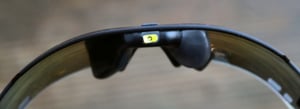
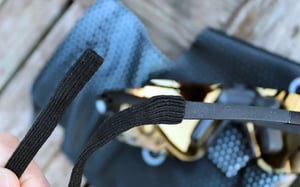
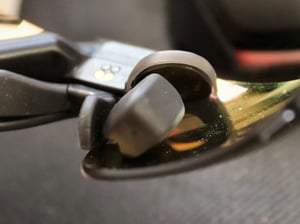

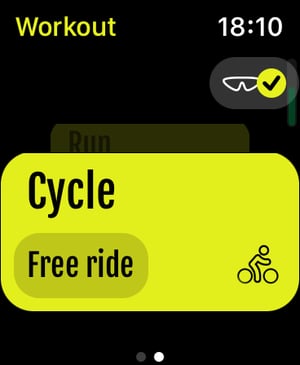



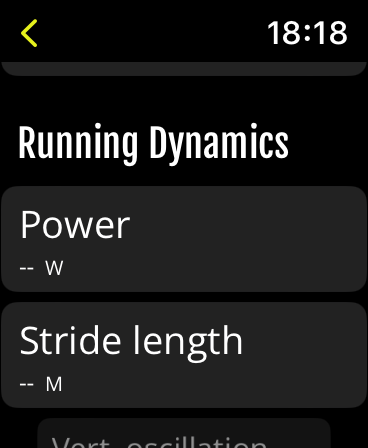


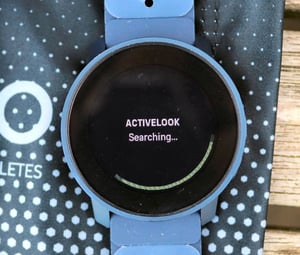



This seems like a really interesting piece of technology, I agree if the price were a bit lower broather spectrums of people could take a purchase decission.
Checking the model Engo 1, those lenses seems to be for low level brigthness scenarios.
In any case, it would be interesting how other main stream companies (garmin?) develop this solution, I would be afraid of companies coming and going, to end with a very expensive paperweight.
If it’s not Garmin(a new varia vision version) julbo could do a 2nd gen version of their glasses.
A company with few possibilities of dissapear in a short period of time.
For context… When Garmin offered the Varia heads-up display (now discontinued), the price was $399 for a clip-on display, i.e., eyewear is required but not included.
ENGO provides an integrated system in two sizes, for one-size-fits-most at about $100 more than Oakley Jawbreakers.
This is, by far, the lowest price HUD for sports ever created.
My thoughts (and reasons against the first gen, as well as this release)…
First, Engo needs to make their app capable of pairing with ANT+ devices (not just Bluetooth).
– You mentioned BT channels not being a problem, but that is ONLY true for devices that natively pair (as listed in the article).. if you need to pair to a particular vendors platform application (below) to record your workout details, via BT, then there isn’t a way to also pair to Engo’s app or the glasses directly.
– Engo can instantly broaden the market, if their app pairs via ANT+. Reason, non-listed (above) devices, often are providing standard metrics (speed/cadence sensors, HRM, etc) via ANT+ or multi-method broadcasts… if these devices are paired to a “NOT LISTED” BTLE-paired device, (and that receiving device only supports BTLE), then it’s “no go” for Engo, as neither the app will help (because it has no way to pair with the sensor), and the (not listed) device isnt’ compatible directly with the glasses (and/or both).
Simple example, Coros new model watches, Polar watches, and who knows how many others, may only be BT only. And you want to record your workouts to those devices so they go into the proper training platform of choice. Thus those sensors BTLE channels are not available for Engo (at all) as they are tied up to the receiving watch/bike computer that isn’t in the list above.
But many (most nowadays) speed, cadence, power, HRM, etc sensors, ARE dual-broadcast capable. So any phone that supports ANT+ reception (most android phones natively or just the ANT+ radio driver needed), IOS devices with an appropriate ANT+ received, etc, can receive those without limitations.
So if the Engo app can be updated to handle ANT+ in a vendor-agnostic fashion (anything following the proper ANT+ standards), they’ve just GREATLY extended their market width. Now ANY generally ANT+ compliant protocol transmitting sensor, is no longer restricted by BT channels to “platform or Engo” choices (or at least less restricted).
I literally have no reason to buy Engo today whether I want to or not, for the above reasons (recording to Polar primarily, also have been using Coros the past 2 years in parallel). And I very much WANT an Engo2 type device for cycling in particular.
hi Chris
i think you have the wrong end of the stick or i didn’t explain clearly.
The Engo 2 device doesn’t pair with any sensors, it just pairs the watch/bike computer/smartphone. it’s up to that other device to make the pairings. so in the case of garmin all is good with ANT+ and BLE sensors (with caveats), in the case of apple you are limited to the native Watch metrics and they can only be populated by the apple watch or by a chest strap in the case of hr. apple watch cant pair by ANT+ nor can Suunto/Polar and that probably won’t change.
I put ActiveLook in contact with Wahoo and Coros. It would be up to Coros and Wahoo to implement compatibility with ActivelLook as ActiveLook do not support the ANT+ extended display channel. activelook is, AFAIK, a proprietary BLE conenction.
Thanks, TFK.
This is 100% correct. Also, few smartphones have native ANT+ support, and BT-ANT+ bridge solutions would require a lot of additional testing and validation for a fringe use case. We say fringe because our research indicates that a majority of avid cyclists and runners use a cycling computer or running watch – even if they carry their phone. Why? Battery life, practicality, safety, camera for #baaw shots… ENGO is for endurance athletes, and avid/elite athletes use a dedicated sports tracker – so we have focused on integrating directly with cycling computers and running watches. The smartphone app is good for a demo, and is necessary to update firmware from time to time – but it’s not intended for regular athletic use. Hope this makes sense!
You cannot run a real workout app alongside the Engo app on the apple watch. You lose SO much, including audio prompts. Not only that, but the display is also in the upper left of the right eye and it is TINY. Nothing like the marketing. It was the most annoying device I’ve tried in ages. I do not agree with this review, but I’m really picky about displays and audio prompts. Having used some cheaper displays like FORM SWIM, showed me that you can have the data big and, in your face, yet not distracting. Also, it didn’t need a companion app, so I could run whatever I want on my watch.
I give it 1 star, and that’s only for the looks. 🙂
I didn’t test running another WatchOS app alongside the Engo Watch app. I wouldn’t advise it in any case.
i link to one of their marketing images in the review. this one: https://the5krunner.com/wp-content/uploads/2022/11/engo-inside-1024×348.png. and i say it DOESN’T look like that but that it’s indicative. which i think it is.
I disagree that it is tiny. As I say in the questions section:
Q: How big is the display
A: The apparent size of the display is about the same as the size of the display on your watch when held about 50cm from your eye…so a nice, sensible size.
I held my watch at about 50cm from my eyes, top left right eye. It’s about right. Which is way too small for a runner. With body movement and all. It needs to be more like the Form Swim. In your face, yet out of the way 🙂 I guess that makes sense.
ENGO offers a 30-day unconditional return policy so anyone can try it. We know that it is hard to simulate without a real demo. That said, the relative size and position is designed with purpose. The display cannot interfere or distract when cycling or running. It needs to be “glanceable” and readable, yet not overwhelming. Form has a different operating condition – in the pool or in open water – where there are no curbs, stop signs, pedestrians, prams, vehicles, etc… The apparent size of the Form display MUST be large in order to function while swimming. It’s a very different situation on the bike, where your head is relatively stationary but you need a full, unobstructed field of view – or running, where your head has vertical oscillation, but little side-to-side motion – and you still need that full, unobstructed field of view. Horses for courses – Form is ENGO’s brother from another mother. Last comment: The ENGO display is positioned to minimize the apparent distance between objective horizon and the “projected” (actually reflected) display. Designs like ye olde Google Glass and Garmin Varia that relied on outboard displays in the periphery required a significant shift in visual focus to the side – which is slower, distracting, and causes balance problems and even dizziness issues for some users. Obvs no good for sports. So we put the data where you instantly see it, without distraction – a lot like the dashboard in an automobile. Putting the display in the periphery – even in an apparent large size – would be like putting your car’s dashboard in the side mirror. Nope.
On the garmin setup, did you get the native running power from Garmin 955 etc showing?
Ordered one anyway, but this would be super this worked.
ActiveLook supports Garmin’s power metric. The full list of supported data types for Garmin can be found here. If you’re not familiar with Garmin’s Data Fields configuration process, please plan to spend a few minutes to become familiar before you sit down to setup ENGO – and please keep in mind, this is Garmin’s process, not ENGO’s… it takes a few minutes, but once setup, it’s very effective.
https://help.activelook.net/en/articles/5290907-activelook-garmin
Please don’t hesitate to reach out if you need assistance, and thanks for trying ENGO!
@TFK, thanks for the thorough review.
You touched on a scenario that marathoners and triathletes appreciate greatly: ENGO makes it possible to set up ENGO + watch displays as primary and secondary displays. i.e., ENGO and the watch don’t need to display the same data at the same time. As you note, this is good for safety, but it’s also super practical for various training and competition scenarios. e.g., put the pace/effort metrics you need to execute your game plan in the “primary” ENGO display, and keep other situational information on the watch (navigation? splits?). With a secondary display configuration, you can free up more room on the watch to show whatever it is you’d like to have ready in the background. This makes the watch face easier to read when needed, and no need fiddle with buttons to change screens.
PS, thanks for your comments and insights – greatly appreciated.
do you have to have the activelook app running on the applewatch for the workout or once you have set up the glasses to display what you want to see on each screen will it just remember (once it has connected to the apple watch) – I ask because I mainly use workoutdoors as my app of choice on the apple watch, although have dabbled occaisonally with the native apple workout app
the glasses get the data from the activelook WatchOS app NOT directly from the sensors.
You HAVE to use their app. This was the biggest turnoff for me. I also use Workoutdoors. I could not use it and have these glasses work as well. You also lose all of your audio prompts, which is what sets workoutdoors apart from everything else.
Going one step further, anyone able to sync the Activelook app (from Apple Watch) data to Strava? I can’t figure it out, and the instructions on the website are not exactly correct (Mobile app on phone > Setting > Connection Center > Connected Apps / Strava > Connect with Strava) –> I can’t see that option being available. Without Strava integration, this product is DOA for me.
What are chances that navigation from Apple Watch will be available?
i think “low”, for a while at least
Great review. I recently purchased the engo 2 and have done multiple runs with it. There seems to be a major issue with the gesture sensor, it would not work switching screens in mid run. This have happened to me in all three of my outdoor runs I tested son far. It leave you stuck with only one data screen and not able to change it. Which is super ignoring unless you power off and on the glasses during your run to get the screen to switch again. Anyone else have this issue?
@Jeff
Sorry for the late reply here, I hope you’ve already been in touch with ENGO support. If not, please note that the gesture setup is in the app – it’s possible that if your sensor is not responsive, it may be turned off as there is a full manual override in the app. I’d check there to start.
Ultimately, your ENGOs are covered by a 2 year warranty, so please do be in touch so we can get you sorted.
Im out for new Glases and remembered this review. I have seen that they now support lap data on Garmin Connect IQ
I own a pair of these and a pair of the Raptors. The Engo’s are everyday livable glasses while the Raptors were 2X as heavy and over optioned, no need for a terrible camera…
The only think I would like the Engo glasses to have is a mapping function for all devices, it was available on the Raptors and it was excellent in Road Racing. Additionally the workout function in the Raptors was best in class for outdoor intervals.
I highly recommend the Engo’s for a person who is looking to have data at all times without the bulk of a bike computer.
@TFK – It’s now late April 2023, so 4+ months after the review. I’m curious how many times you have used them in 2023 and if it is for running, biking or other sports? Has your viewpoint changed at all with them?
Also a question, I assume the answer is no, but can the HUD be moved to appear in front of the left eye rather than the right eye? I have limited vision in my right eye, so the Engo 2 wouldn’t work for me unless the the HUD can be visible from the left eye.
It will not work on the left eye. The projection of the display is located in the left side of the Right lens only.
Bought February 2023, it’s May 2023, after a few uses, I can’t charge them (they stopped working) I’ve been trying to contact Engo for a week and no response ….. it seems that they are focused on SELLING ONLY because the service DOESN’T EXIST!!! it looks like their warranty is only on paper , this is UNACCEPTABLE
try contacting your credit card company. They should be able to do a charge back if the company wont respond.
similar problem.
Glasses stopped working after 3 runs.
Contacting support to return, instead of giving me the return details like I requested they told me this:
“The issue can be that after several attempts the glasses may have entered into a security mode and do not switch on or even charge.
Unfortunately, you need to leave the glasses about 3-4 days in order to let the memory battery discharge by itself…like a hard reser
After this delay you can try to charge and switch on the glasses.
Come back to us after 3-4 days and give us the result please.”
Security mode, really!@?
that sort of thing is possible but doesn’t sound great i agree.
i would hope that you could start it up and update firmware to stop it happening again.
Wow! Just wow! I wish I read this review fully and especially the comments ????????
The above has been exactly my experience too: the glasses worked for 3 days and a total of 2 runs, after which they stopped turning on or charging. I spent the following 3 weeks trying to get support, with the same inane excuses of “security mode lock” and a need to wait for 3-4 days for a battery to discharge and another week because a “support team was out”. Finally got me a DHL label to return glasses… all the way to France. It’s now been 4 days since the glasses have been delivered back to the manufacturer with not a word from Engo.
Not sure how they plan on staying in business ???? Perhaps they don’t.
@Miro
It looks like we received your support request on 13 May and responded the next day, attempted a full reset, then sent a return ticket, and by 23 May had confirmed that replacement ENGOs were en route.
If you require additional assistance, please let us know, and sorry for the difficulty experienced with your first pair.
It’s May 2023 and I had purchased a pair of Engo 2 app. two weeks ago. The first set didn’t work properly and after some back and forth emails, I was advised to return them for a replacement. The replacement glasses arrived two (2!) days later and I used them on a 10 km on that very day. I think they are fabulous. Charging time, setup, display, … everything worked just fine and I am really happy with my new gadget. I am 63 and have been running Marathon for 51 years! (PB 2:31 way back in the past). I have probably tried every running toy that there was and is, but this one stands out, is really fun and useful and worth its money (not that my wife would necessarily agree on the later statement).
@ Dr. Holzapfel
Thanks for your comment – Wishing you continued success on the road and with ENGO.
I think you should really put a big fat disclaimer at the top of the article saying that according to multiple comments from regular readers of the blog, the glasses are of extremely questionable quality and the company’s customer service is basically non-existent. Buyer beware! I wouldn’t go as far as to call that a total scam yet, but we are absolutely getting there.
Just scanning the 29 comments above, out of a few people who actually used the tech, one person was extremely annoyed, one had issues that got sorted out with a replacement, and three more had exactly the same hardware problem and are busy chasing company trying to get that addressed. I paid for my glasses almost 6 weeks ago, and $300 netted me two runs, a whole bunch of emails, and a trip to another end of town in search of a closest location accepting DHL…
ok nick, fair point, will do. as i say i nthe article i don’t get commission on this
@Nick
Based on the comments here, your suggestion seems fair. But in our defense, warranty claims are rare, and people rarely return to forums to post updates. After scanning names here and our support ticket log, it looks like anyone who needed a replacement has received one. We do apologize for the inconvenience you and others have experienced. We strive for 100% satisfaction, which is why we provide an unconditional 30 day satisfaction policy, plus a 2-year warranty against defects.
If there’s anything else we can do, please don’t hesitate to reach out.
Hi, can you explain this:
“However, if you have paired Stryd as a power meter on a Garmin watch (which is usually incorrect) then ActiveLook should display power”.
What is incorrect; Stryd power or Garmin power without Stryd?
stryd say not to pair the sensor as a power meter
garmin power does not use stryd
my opinion is that stryd power is likely to be more accurate than garmin power and, in any case, the two are different and use completely different algorithms leading to very different values
Cyclist here, ex-marathon/5k/10K runner. I’ve tried Engo, and while I like them, but they simply repeat a newer-model Garmin Edge, so you still carry have to carry it. For rides under 8 hours (100 miles would be a good threshold), I prefer my Everysight Raptors, because they are standalone and don’t depend on mounting a cyclo to my bike. I can use any bike, any time there is enough light for their dark lenses. (Everysight at present can’t supply the lighter lense). I like the camera/video capability, but don’t use the music. Nice that it’s there, though. I hope some firmware upgrades will assist in pairing, and I’d love to see replacement arms that would house a micro-SD card up to 256GB or something like that.
Everything is working pretty well for me except getting the heart rate from my iPhone app to display – it works from the Apple watch app though ( the speed display on the watch app seems less accurate than the phone app also ). After all of their online tips to get this to work, sadly it didn’t fix it. Waiting to hear back from Engo…any ideas out there?